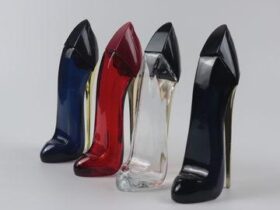Wetsuits and drysuits keep you warm in the cold winter air and water. Both are well-fitted clothing that is apt for diving and protecting the body from atmospheric elements. If you wish to know the difference between wet and dry suits, you must understand that both serve the same function. However, the main difference is in the material used for making and in ways they can benefit the diver.
What Is A Wetsuit?
Wear a wetsuit for activities in the water because it will conform better to the skin. Most of the time, a wetsuit will help you perform nicely in cold water. However, a drysuit is waterproof and is an excellent choice for people who don’t want to get cold water on their skin. When it is cold, and you can’t move normally, it would be better to wear a dry suit.
Wetsuits come in different thickness levels. The thicker ones offer more shield and insulation for cold water, while the thinner ones offer less insulation. On the other hand, a wetsuit needs to be thick enough to withstand the temperature of the water you are diving in. But it is important to remember that everyone’s body is different, which is why the way a particular suit keeps you warm will usually be different for different people.
What Is A Drysuit?
A dry suit keeps you dry by ensuring that no water gets inside. It is also totally sealed clothing, keeping you dry with wrist seals, a neck seal, and a waterproof zipper.
Drysuits aren’t as tight as wetsuits, so you can wear other clothes or insulation layers underneath. They work by keeping a layer of air between the body and the suit. You can control how much air is between the body and the suit with valves that let you add more gas as you go deeper. Drysuits also have valves that let the air out when you’re up. The inflator valve works like the power inflator on a buoyancy compensator vest. It is usually in the middle of the chest of the suit.
How Are They Different?
If you are trying to understand the difference between wet and dry suits, here are a few essential pointers to consider.
-
Insulation against heat
Water is better for keeping the body warm because it retains heat 20 times faster than air. Wetsuits create a layer of water warmed by the person’s body temperature to keep the body warm. On the other hand, drysuits use a layer of air and are completely sealed to keep water out and away from the skin.
Divers can wear extra layers under both types of suits to keep warm, but the loose fit of dry suits makes it easier to wear thicker layers underneath.
-
Mobility
Wetsuits help you move fast and comfortably underwater because they fit close to your skin. Depending on the material, drysuits are much baggier and can slow you down when swimming.
-
Lifespan
Drysuits are usually more costly than wetsuits because they are more complicated to make and can be used in many places. Even the most expensive drysuits can be better than high-quality wetsuits because they can last for more than 15 years if taken care of properly.
-
Value
With more brands and newer materials on the market, quality entry-level drysuits now cost the same as high-end wetsuits. Wetsuits tend to get worse after a few years of regular use, while drysuits tend to keep their value.
Conclusion
Regardless of what you invest in, both serve the same function. They keep you warm and help combat different situations underwater.











